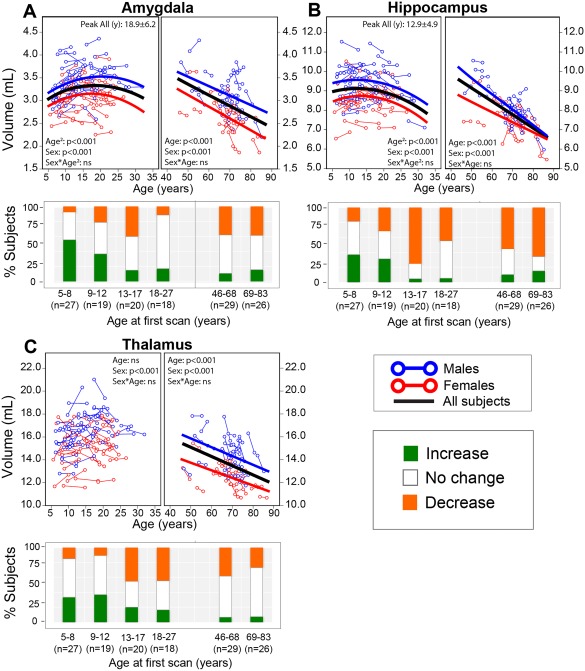Figure 7.

Longitudinal trajectories of (A) amygdala, (B) hippocampus, and (C) thalamus volumes with age and their associated subject histograms denoting significant (greater than ±1 SD) volume changes between the two scans approximately 3–4 years apart on average. The amygdala and hippocampus follow an inverted U‐shaped trajectory peaking in volume in adolescence, and experience the steepest declines in volume among the 7 subcortical structures after 46 years of age. The thalamus did not change significantly with age in the neurodevelopmental cohort, but declined in volume in the aging cohort. The individual subject histograms shows growth of the amygdala in half of the subjects in the 5–8 year old bin, but is variable with increases, decreases, and no change for other structures over all age bins. An exception is the hippocampus that shows about 50%–75% of the subjects decreasing in volume in the four oldest bins, 13 years and up. [Color figure can be viewed at http://wileyonlinelibrary.com]
